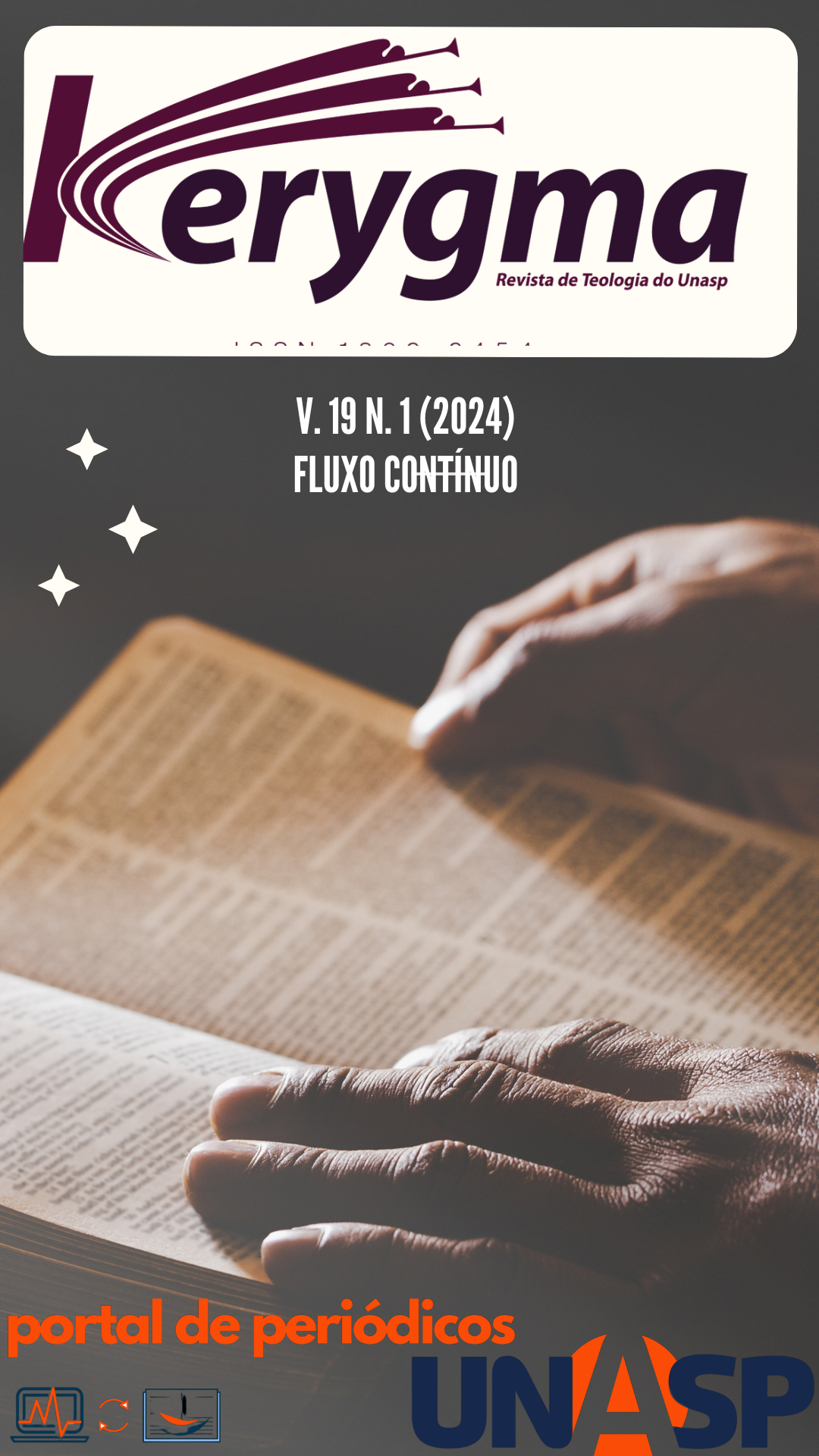Abstract
This article analyzes the influence of the Apocalypse of John on Marcos DeBrito's novel Apocalipse segundo Fausto, considering the similarities and differences in the construction of the plot and the apocalyptic images. A comparative analysis was adopted, comparing central passages of the novel with the biblical text. It was observed that DeBrito takes up striking symbols from the Johannine prophecies, but from a materialist point of view. Thus, while the Johannine Apocalypse points to eschatological hope, the novel emphasizes cosmic destruction. In conclusion, DeBrito subverts biblical images by presenting an end of the world without redemption.
References
AGUIAR, A. T. Passagem do tempo e desconstrução de identidade: um diálogo entre Virgínia Woolf, Lispector e o Qoheleth. Formadores, v. 2, n. 2, p. 286-293, 2008. Disponível em: https://adventista.emnuvens.com.br/formadores/article/view/84. Acesso em: 05 mar. 2025.
AGUIAR, A. T. As questões originais e a crise existencial do homem moderno: um diálogo entre Bíblia e Literatura. Paralellus Revista de Estudos de Religião - UNICAP, v. 2, n. 3, p. 7-20, 2011. Disponível em: https://www1.unicap.br/ojs/index.php/paralellus/article/view/183?articlesBySimilarityPage=7. Acesso em: 05 mar. 2025.
AGUIAR, A. T. Bíblia, Literatura e Existencialismo: Eclesiastes e Lispector em diálogo. Revista de Teologia e Ciências da Religião da UNICAP, v. 2, n. 1, p. 196-206, 2012a. Disponível em: https://www1.unicap.br/ojs/index.php/theo/article/view/174. Acesso em: 05 mar. 2025.
AGUIAR, A. T. O mito do duplo nas obras Esaú e Jacó e Dois Irmãos. Acta Científica, v. 21, n. 1, p. 11-24, 2012b.
AUNE, David. Revelation 6–16. Nashville: Thomas Nelson, 1998. (Word Biblical Commentary, v. 52B).
BEALE, Gregory. The book of Revelation: a commentary on the Greek text. Grand Rapids, MI: William B. Eerdmans Publishing, 1999. (New International Greek Testament Commentary).
BEALE, Gregory; CAMPBELL, David. Revelation: a shorter commentary. Grand Rapids, MI: William B. Eerdmans Publishing, 2015.
BLOOM, Harold. A angústia da influência: uma teoria da poesia. 2. ed. Rio de Janeiro: Imago, 2002.
BOCK, Darrell. Luke: 9:51–24:53. Grand Rapids, MI: Baker Academic, 1996. (Baker Exegetical Commentary on the New Testament, v. 2).
BOXALL, Ian. The Revelation of Saint John. London: Continuum, 2006. (Black’s New Testament Commentaries).
DeBRITO, Marcos. O apocalipse segundo Fausto. São Paulo: Coerência, 2020.
DORNELES, Vanderlei (ed). Comentário bíblico adventista do sétimo dia. Tatuí: Casa Publicadora Brasileira, 2014. (Série Logos, v. 7).
ECKLEY, Richard. Revelation: a commentary for bible students. Indianapolis, IN: Wesleyan Publishing House, 2006. (Wesleyan bible commentary).
ELIOT, T. S. Ensaios. São Paulo: Art Editora, 1989.
FANNING, Buist. Revelation. Grand Rapids, MI: Zondervan Academic, 2020. (Zondervan Exegetical Commentary on the New Testament).
FLEMMING, Dean. Foretaste of the future: reading revelation in light of God’s mission. Downers Grove, IL: InterVarsity Press, 2022.
FRYE, Northrop. O grande código: a Bíblia e a literatura. Campinas, SP: Sétimo Selo, 2021.
FRYE, Northrop. O poder das palavras: a Bíblia e a literatura II. Campinas, SP: Sétimo Selo, 2022.
GREEN, Joel. The gospel of Luke. Grand Rapids, MI: William B. Eerdmans Publishing, 1997. (The New International Commentary on the New Testament).
KRISTEVA, Julia. Introdução à semanálise. 2. ed. São Paulo: Perspectiva, 2005.
MOUNCE, Robert. The Book of Revelation. Grand Rapids, MI: William B. Eerdmans Publishing, 1997. (The New International Commentary on the New Testament).
MUELLER, Ekkehardt. Jesus and his second coming in the Apocalypse. Journal of the Adventist Theological Society, v. 11, n. 1–2, p. 205-215, 2000. Disponível em: https://digitalcommons.andrews.edu/jats/vol11/iss1/19/. Acesso em: 05 mar. 2025.
NITRINI, Sandra. Literatura comparada: história, teoria e crítica. São Paulo: Editora da Universidade de São Paulo, 1997.
OSBORNE, Grant. Apocalipse: comentário exegético. São Paulo: Vida Nova, 2014.
OSBORNE, Grant. Revelation. Grand Rapids, MI: Baker Academic, 2002. (Baker Exegetical Commentary on the New Testament).
SCHREINER, Thomas. Revelation. Grand Rapids, MI: Baker Academic, 2023. (Baker Exegetical Commentary on the New Testament).
STEFANOVIC, Ranko. Revelation of Jesus Christ: commentary on the book of Revelation. 2. ed. Berrien Springs, MI: Andrews University Press, 2009.
THOMAS, Robert. A classical dispensationalist view of Revelation. In: PATE, Marvin (Org.). Four Views on the Book of Revelation. Grand Rapids, MI: Zondervan, 1998. p. 177-230.
WHITE, Ellen. O grande conflito. Tatuí: Casa Publicadora Brasileira, 2007.
WRIGHT, Nicholas. Revelation for everyone. Louisville, KY: Westminster John Knox, 2011. (New Testament for Everyone series).

This work is licensed under a Creative Commons Attribution 4.0 International License.
Copyright (c) 2025 Kerygma

